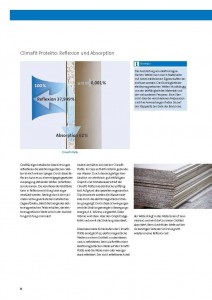- Call
 (760) 804-9400
(760) 804-9400 - Call
 (760) 804-9400
(760) 804-9400 - Providing Services In California & Beyond
 (760) 804-9400
(760) 804-9400 (760) 804-9400
(760) 804-9400 The reduction or mitigation of low and high frequency electromagnetic fields is achieved by source removal or shielding applications. Source removal is the most effective way but not always possible. For example, by moving DECT cordless phones, wireless routers or electrical transformer away from areas of prolonged exposure, such as offices or bedrooms.
The reduction or mitigation of low and high frequency electromagnetic fields is achieved by source removal or shielding applications. Source removal is the most effective way but not always possible. For example, by moving DECT cordless phones, wireless routers or electrical transformer away from areas of prolonged exposure, such as offices or bedrooms.
Shielding of electromagnetic fields is achieved by applying different electrically conductive materials to surfaces. A variety of different materials are available to shield fields, such as wire meshes, fabrics, films, coatings and special sheet metals. The efficacy of the shielding materials is by the percentage of reduction between before and after values and is professionally expressed in dB of reduction. The degree of the reduction is dependent of the frequencies and fields present, building design penetrations and feasibility. Here is an example for RF shielding.
| Before | Reduction in dB | Reduction in % | After Shielding |
|---|---|---|---|
| 150,000 nW/cm2 | 10 | 90 | 15,000 nW/cm2 |
| 150,000 nW/cm2 | 20 | 99 | 1,500 nW/cm2 |
| 150,000 nW/cm2 | 30 | 99.9 | 150 nW/cm2 |
| 150,000 nW/cm2 | 40 | 99.99 | 15 nW/cm2 |
For a successful shielding project, we first need to identify the field type and frequencies. This is achieved through a baseline survey. We have developed economically reasonable methods to reduce RF exposure in your building.
 |
 |
| Interior application of Cuprotect® | Exterior Application of Cuprotect© at commercial building |
Our professional EMF and RF shielding services are designed to help you achieve the EMF and RF reduction you desire or require.
RF Shielding by EMF & RF Solutions
Shielding materials will either absorb RF energy and transform it into heat, reflect it away, or both. They will not 100% eliminate the RF fields but significantly reduce them. These materials can be paints, meshes or foils. They are applied at a source, such as a sleeve (Cuprotect®’s Wi-Fi Shield) placed over the Wi-Fi antenna, or a building can be shielded from RF emissions from a near-by cell tower.
The shielding materials are applied to the interior or exterior of the building envelop. If shielding is desired, professional testing should be done to ascertain what type of fields are present and at what strength. It is important to choose the right shielding material and to verify that the fields have been reduced afterwards.
 Cuprotect® is a company headquartered in Germany. The shielding material and system is now available through a distributor in the United States. Its founder, Wolfgang Kessel, developed a patented copper wire mesh RF shielding system for buildings. The system has one of the highest shielding effectiveness ratings in the industry. The Cuprotect® material is pliable, light weight, and any commercial, institution, or residential building can be retrofitted to reduce exposure to building occupants.
Cuprotect® is a company headquartered in Germany. The shielding material and system is now available through a distributor in the United States. Its founder, Wolfgang Kessel, developed a patented copper wire mesh RF shielding system for buildings. The system has one of the highest shielding effectiveness ratings in the industry. The Cuprotect® material is pliable, light weight, and any commercial, institution, or residential building can be retrofitted to reduce exposure to building occupants.
 We are technical consultants for the implementation of Cuprotect® shielding systems in the US. Together with Cuprotect® and Premier Roofing, we completed the first commercial radiofrequency (RF) shielding project in the San Diego. A cellular tower is installed on the roof a two-story commercial building and the building owner wanted the exposure to his tenants and their clients to be reduced. The roof was going to be replaced, so the RF shielding system was integrated into the new roofing membrane and the indoor RF levels were significantly reduced.
We are technical consultants for the implementation of Cuprotect® shielding systems in the US. Together with Cuprotect® and Premier Roofing, we completed the first commercial radiofrequency (RF) shielding project in the San Diego. A cellular tower is installed on the roof a two-story commercial building and the building owner wanted the exposure to his tenants and their clients to be reduced. The roof was going to be replaced, so the RF shielding system was integrated into the new roofing membrane and the indoor RF levels were significantly reduced.
Cuprotect also provides a number of wireless shielding systems for wireless routers and access points. For more information visit their website at www.cuprotect.eu Cuprotect® recently completed the installation of its material at a new 1,600 Megawatt nuclear power plant in Finland. The purpose there was to protect the power plant against electromagnetic pulses from atomic bomb explosion in the thermosphere, electronic air or from ground attacks and solar flares.